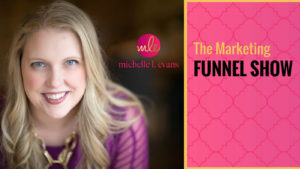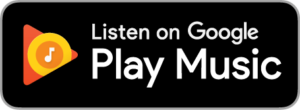
Episode 51: Fifty, Fabulous, and Fulfilling Funnel Fantasies – Part 2
Last episode we hit a SUPER exciting milestone on the podcast…our 50th episode!
To mark this exciting day, instead of listening to me talk about marketing funnels, I decided to invite a few of my students to come on the show to have me coach them through a specific question about their marketing funnel.
I want to give a shout out to all these students because it’s not easy for everyone to raise their hand and publicly ask questions and be vulnerable with where they’re at. These students were super brave in bringing their questions out from behind our 1-on-1 interactions and into the podcast for a few reasons.
First of all, they personally get a lot out of these conversations. I’ve gotten to know each of these students, including their goals and their audience. As a result, the advice I give them is super specific to what they want to accomplish.
Secondly, many of these people are just like you. They’re not marketing experts at all. They’re people who are experts in their specific topic areas AND they want to figure out how to get a marketing funnel up and running so they don’t have to market themselves all the time.
And finally, all of these questions are questions I hear all the time. I was so honored and thrilled that these students would bring their vulnerable questions to the forefront because our coaching discussion WILL help you.
It’s so powerful when we discover we’re not the only ones who are confused and struggling.
This episode is a continuation of episode 50 and I’ll be speaking with Leslie Evans Thorne and Steve Sponseller.
 Biggest Show Takeaways:
Biggest Show Takeaways:
- Leslie Evans Thorne’s challenge: Leslie built a quiz that places respondents into one of four buckets based on their answers. What she found was that as she was writing up the description of each bucket she was providing way too much information that people would likely end up not reading. She wants to create a shorter description and then lead them into providing their email so they can get the full write-up.
- Most of the time, you want to ask for the email BEFORE providing quiz results as that’s when they’re the most engaged. You can yield much higher results when asking for the email upfront versus after you’ve provided some information.
- Asking for the email after the fact generally yields about a 25-50% opt-in rate versus the upfront rate of 80% or more.
- Email is the glue to the marketing funnel. That’s how you continue the conversation and engage your audience further.
- Identify the beliefs of the people in each bucket and figure out what the conversation is that you want to have with them so you can show how you can help.
- You want to set the stage for getting them on the phone into a consult call by priming them with your emails. Reiterate throughout the sequence that they’ll get the most out of their opt-in by getting on the phone with you for a discussion.
- Use your emails to tease the next one; take your audience through and give them little nuggets from your content and pepper them through your sequence so people can internalize your key messages. Shares stories that directly relate to those messages.
- Avoid sending multiple “teasing” emails (“stay tuned for more about XYZ…) without ever closing the loop. People will lose interest if they feel like they never get closure.
- Steve Sponseller’s challenge: Steve is launching a course geared toward people looking to protect their intellectual property (like podcasts). His main audience is entrepreneurs, authors, speakers, coaches, and consultants. Steve’s hosting a webinar to educate his audience on understanding what intellectual property is, how it applies to them, and why they should take care of this for their business.
-
- Your funnel creation should start with understanding what it is that you need your audience to believe. In Steve’s case, they need to believe that they CAN take care of some of their intellectual property work on their own.
- Identify your areas of content. What are things you want to educate your audience on? What’s at stake if they don’t do what you’re suggesting? What are the possible outcomes?
- Present your options about what next steps they can take. Give them choices.
- Address the myths and misconceptions people have about your area of expertise.
- Bridge into the offer in a way that shows them you have easy steps to follow to solve their issue. They need to believe that if they’re going to buy.
- Want to know which marketing funnel is right for you and your business? Take this free and easy quiz and in less than 5 minutes you’ll know EXACTLY which funnel is right for you.
Links mentioned in this episode:
- Leslie’s website: www.YouAreFree.com
- Steve’s website: https://ContentProtectionGuide.com
- HowToFascinate quiz: www.howtofascinate.com
- Marketing Funnel Quiz: https://www.michellelevans.com/marketing-funnel-quiz/



